By Todd Alonso, MD
Assistant Professor
Assistant Medical Director for Quality and Informatics
Barbara Davis Center for Diabetes
Anyone wrangling the day-to-day variations in blood sugar has observed that some times of day present particular challenges. Experts estimate that half of people with type 1 or type 2 diabetes experience blood sugar rises around the beginning of the day, an event we know as the Dawn Phenomenon. The current understanding is that overnight growth hormone and cortisol secretion leads to insulin resistance in the liver, resulting in more glucose output, and in muscle, reducing glucose uptake. In people without diabetes, early morning insulin levels increase only slightly, probably because insulin from the pancreas flows into portal veins which branch into capillary beds in the liver before passing on to the rest of the body, thereby allowing the liver to “see” more of the insulin than it does in a person with diabetes whose insulin comes from subcutaneous injection.
 In practice, this phenomenon becomes pronounced when our patients reach puberty, often requiring them to use up to twice as much insulin per gram of carbohydrate at breakfast as they do during the rest of the day. In addition to optimizing the insulin to carb ratio, for insulin pump users we increase the basal rate around the time the person wakes up. Patients who use once daily long acting insulin usually benefit from taking it in the evening, allowing the subtle peak to occur around dawn. In contrast, however, is the experience of prepubertal patients, who often have their greatest basal insulin need between 9 PM and midnight, which leads us to increase basal rates or give long acting insulin in the morning.
In practice, this phenomenon becomes pronounced when our patients reach puberty, often requiring them to use up to twice as much insulin per gram of carbohydrate at breakfast as they do during the rest of the day. In addition to optimizing the insulin to carb ratio, for insulin pump users we increase the basal rate around the time the person wakes up. Patients who use once daily long acting insulin usually benefit from taking it in the evening, allowing the subtle peak to occur around dawn. In contrast, however, is the experience of prepubertal patients, who often have their greatest basal insulin need between 9 PM and midnight, which leads us to increase basal rates or give long acting insulin in the morning.
Dietary management is also a good tool. While it may be counterintuitive, eating breakfast is very important, as it decreases the secretion of hormones mentioned above. Your mother was right when she said that breakfast is the most important meal of the day! Additionally, increasing the protein to carbohydrate ratio of the evening meal has been shown to help.
Exercise, especially in the evening, has also been shown to reduce the effect of the Dawn Phenomenon. For this and other reasons, I encourage all my patients to participate in fitness activities throughout the year.
Managing the ever-changing glucose trends and insulin needs is difficult, requiring frequent monitoring and adjustment. Your healthcare team can help you identify these trends, but I also encourage you to use these tools to become your own expert!





